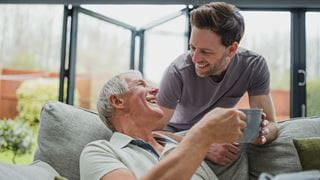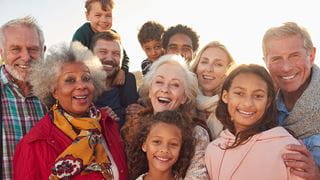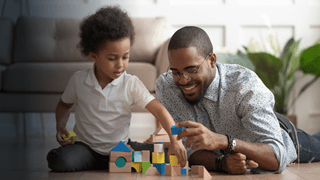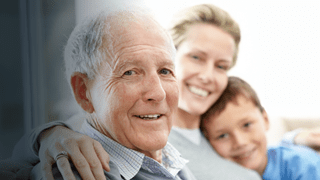Safeguarding in Sport
Safeguarding measures are required in a wide range of different scenarios and organisations. One of these is sports, whether the club in question is a professional organisation or a local, community-run group.
When we talk about safeguarding in sport, we’re often talking about protecting children and/or vulnerable adults in these scenarios, but this isn;t always the case. Adults can also be the victims of abuse, some of which may be perpetuated by people within a sports club, which is why safeguarding training and procedures are essential no matter.
In this article, we explain why safeguarding in sports is so important, highlight key areas that safeguarding training might focus on, and share our top safeguarding tips for sports clubs.
Why is Safeguarding Important?
In the UK, we still see cases every year of vulnerable children and adults being abused in some form, whether sexually, financially, or in any other manner. Safeguarding is aimed at protecting these vulnerable children or adults from abuse and neglect in all circumstances.
As a general concept, safeguarding involves protecting people from harm. This often comes in the form of a framework, which means putting processes in place to ensure that vulnerable people are not abused in any way and allowing those involved to follow certain steps and prevent negative outcomes in a tried and tested manner.
Safeguarding is never the responsibility of just one or two people, but more of a principle that everyone must follow if they come into contact with vulnerable people.
Why is Safeguarding Important in Sport?
Staff training and development in sports, specifically around the topic of safeguarding, is often only briefly touched upon by sports clubs and organisations. The commitment to protect and provide sufficient staff training is often strong, but many clubs can feel unsure about how to successfully achieve this.
It is the people, not policies, that safeguard the vulnerable. In order to achieve effective safeguarding standards, every single member of staff should be fully aware of what safeguarding really means for their club and what supportive steps should have been put in place.
Those that work in a sports club are not responsible for deciding whether or not abuse has taken place. Instead, they are responsible for spotting warning signs, knowing who to pass their concerns on to and reporting any issues.
This can only happen if members of staff and volunteers have the necessary understanding of what safeguarding really means for your organisation and if they have the opportunity to develop, practice and implement the necessary skills needed to protect those at risk.
Top Safeguarding Tips for Sports Clubs
If you work or volunteer with a sports club or organisation, here are some key areas to focus on and top tips for safeguarding your members, whether they’re children or adult athletes.
Establish Safeguarding Policies
First things first, any strong safeguarding strategy should ensure that all of the following are in place throughout your establishment and that this basic information reaches all members of staff, including any volunteers.
- Establish clear responsibilities and lines of accountability throughout your clubs.
- Create easily accessible safeguarding policies and guidance for all members of staff and all volunteers.
- Provide engaging safeguarding training so all staff and volunteers are equipped to identify and respond effectively to safeguarding-related incidents and concerns.
- Check that there is a club-wide, cultural understanding of safeguarding imperatives and responsibilities.
- Implement and monitor a consistent use of standard recording procedures throughout all of your clubs.
Offer Comprehensive Safeguarding Training
Staff training and development plays a crucial role in safeguarding within every organisation. It helps keep people safe, builds a ‘let’s do things right’ culture and prevents damaging regulation breaches.
Following your safer recruitment process, staff and volunteers should be DBS checked if they are going to work with children or vulnerable adults. Anyone working at the club or organisation needs to be trained and supported by your organisation to ensure that they can effectively safeguard and know how to respond to any concerns.
In addition to initial training, it is equally important that ongoing training and resources are available.
Monitor and Evaluate Safeguarding Procedures
Along with successfully establishing safeguarding procedures and providing appropriate training, organisations and clubs need to understand whether their safeguarding measures are effective, where improvements can be made, and recognise any patterns of risk.
Make sure that you keep a record of any safeguarding claims or concerns that are made in your organisation so that you can spot patterns that can help you to create a safer environment. Any time a safeguarding concern is raised, you should examine whether you could have put any additional measures in place to catch it sooner or whether anything your sports club is doing may be contributing to the situation.
Successful safeguarding shouldn’t involve implementing a system and delivering training and then forgetting about these things until a whistleblowing situation. Your safeguarding procedures should be constantly monitored and improved where necessary, alongside training that is refreshed every year.
Physical Contact in Sport
When it comes to safeguarding in sport, initiating physical contact, such as administering medical aid, can be a daunting task because of the social and legal frameworks set up to protect children from harm. If your sports club or organisation runs children’s classes or training, knowing how to currently approach physical contact is a key part of safeguarding.
The Child Protection in Sport Unit, which is part of the NSPCC, has established helpful guidelines for those who work with children in sports. One of the main tenets should be that physical contact should only take place if necessary, to treat an injury, to demonstrate sports skills, to keep the child from being injured or to comfort or celebrate the child’s achievements.
Some of these guidelines include ideas such as:
- Physical contact should only happen in the interests of the child, and not in the interests of the adult.
- Contact with a child should be justifiable and done in such a way that it can’t be misinterpreted by the child or by bystanders.
- Communication is key and any physical contact should be clearly explained to the child by the adult.
- Physical contact should never involve touching a child on their genital or crotch areas, their buttocks, their breasts or any other area that might cause shame or distress.
- Physical contact should always take place in the open and should never be done in secret or in private.
- Children should always be encouraged to speak up if anything seems to be wrong, inappropriate or out of place.
- Demonstrations should take place with different children each time, rather than the same one.
The full list of recommended guidelines can be found here.
Grooming in Sport
Grooming in sport is something that can happen to players or members of any age. Whilst children are more vulnerable and likely to fall victim to grooming without realising that something is wrong, adults can just as easily be groomed in a sports context, especially in relationships with a power dynamic, like coach and player.
The following four steps, as outlined by Celia Brackenridge and Kari Fasting, are the foundation of how an abuser would groom an athlete, each one presenting behaviour to spot which can help prevent a successful grooming incident.
Targeting a Potential Victim
The first thing an abuser will likely do is identify a vulnerable athlete by observing them during training, and checking their behaviour to see whether it seems they would be susceptible to typical grooming tactics. Individual abusers may have their own criteria for how they choose targets, but an example criterion might be an athlete who seems more distant from the other athletes or their teammates.
Striking up a friendship and being overtly positive would be the initial move to see whether the target responds to this form of attention.
Building Trust
Once the inroad has been established and the abuser has profiled their target as having exploitable aspects, the abuser will begin to build deeper bonds of trust and emotional connections. Consistency is key at this point, as abusers will want to be perceived as a stable source of support and positivity.
Spending more time with their intended target and making them feel special will create a strong relationship between the two, with gifts and rewards being typical tactics abusers will use to create a positive connection between spending time together and receiving presents. At this point, an abuser will potentially start outlining basic conditions around meeting and bargaining (‘you have to do X because I have done Y’).
This is where things start to get problematic, as an element of obligation is formed and a power imbalance is created.
Developing Isolation, Control and Loyalty
From this point, an abuser might start exercising how much control they have over the vulnerable athlete they’ve targeted. This could be done by making the athlete complete little tests or answer questions which check how committed they are to please their abuser.
Cutting them off from their support networks, whether that’s friends, family or both, would also be in their interests as it creates a larger sense of isolation and makes their target more reliant on them rather than parents or peers.
Initiation of Abuse and Securing Secrecy
If an abuser can almost completely isolate their target athlete and create a general feeling of reliance on them, they will then begin to push into ambiguous territory regarding sexual boundaries. This might be done through entrapment through previous sexual incidents, feelings of obligation around repayment for gifts or help getting further within the sport, or invoking feelings of guilt for poor performance.
The previous tests around commitment and secrecy will likely come into play here, as it’s these elements which an abuser will use to ensure any deviant behaviour goes unreported. Discrediting the athlete may be used if they object, claiming that no one would believe them anyway, and coercive behaviour could be used as a final resort to ensure cooperation.
In a professional sports context, threats to cut them from the team could also be used against them, holding their athletic career in the balance.
Child Abuse in Sport
Child abuse in sports can take on many forms including mental abuse, physical abuse and sexual abuse. One of the main reason child abuse in sport is more prominent is because of the large number of children under the age of 18 who are involved in sports teams and who embark on sport-based trips.
The positions that coaches in particular have with these children is a mixture of authority and companionship, with the coach holding a position of trust over his charges. This makes it easier for child abusers to push children into doing something they feel uncomfortable doing, and to threaten or coerce them into not telling anyone, ultimately opening the door to abuse.
Another factor is the fact that sports teams are, by nature, competitive. Instances such as not performing well during a match or game can lead to punishments by adults which constitute abuse such as extreme vocal abuse, forcing a child to have a cold shower or violent punishments.
These factors on their own or combined can make it easier for abusers to carry out inappropriate or harmful actions against children.
How to Spot Signs of Child Abuse in Sport
There are numerous signs of child abuse in sports that those with a safeguarding responsibility should be aware of. Here are some of the key things to remember.
- Take note of any physical injuries. While these might be part and parcel of playing a contact sport like rugby, bruises can be a sign of physical abuse, particularly when focused around the head or neck.
- Be aware of any injuries which aren’t adequately explained by taking part in sports such as serious fractures, burns and scalds
- If a child talks about sexual behaviour that is beyond their age range
- Be aware if a child displays strong distrust of adults and other children and finds it hard to communicate with others
These are just a few ways that abused children might indicate that they are being targeted, but it’s important to know that these do not necessarily mean that they are. If you suspect that a child is being abused in their sports club, you should speak to your organisation’s designated safeguarding lead, who will be able to contact appropriate local services to pursue your claims.
FAQs
What are the key principles of safeguarding?
There are generally considered to be six key principles of safeguarding. These are empowerment, prevention, proportionality, protection, partnership and accountability.
How is safeguarding implemented in sport?
Safeguarding is implemented in sport in many of the ways it is implemented elsewhere. Responsible adults are given safeguarding training so that they know what to avoid and what to look out for, sports clubs implement safeguarding policies and procedures, and any safeguarding incidents are reported to the relevant local authority which will pursue the claim and bring in appropriate services.
Who does safeguarding apply to?
Safeguarding applies to anyone and everyone, but in many cases it focuses on the protection of children and vulnerable adults. This is because these groups are less able to advocate for themselves and more likely to be taken advantage of, requiring standardised methods, training and laws to prevent these kinds of situations.
As we have discussed in this article however, safeguarding responsibilities require you to protect anyone that may be at risk of harm or abuse, no matter their age or position. If you have a safeguarding responsibility, you should look out for anyone you interact with whilst working or volunteering at a sports club or organisation.
Summary
Sports are an area where safeguarding is particularly important, whether the athletes are children or adults. Delivering regular safeguarding training and developing effective procedures is the best way to keep the members of your sports organisation or club safe, along with following the recommended procedures for good safeguarding practice.
If you’re interested in how you can help practice safe sport and protect athletes through implementing proper safeguarding techniques, we offer an online ‘Safeguarding in Sport’ course that shares specific advice for safeguarding in this context. You can also take a look at our range of online safeguarding courses to find the right training resources for you.









/safer-recruitment.jpg?mw=320&hash=A2BB5E144C89C295EC10C63680F69F39C4C3E566)
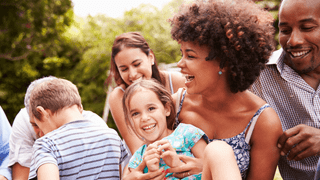

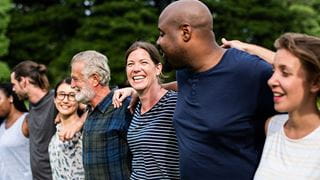

/e-safety-.jpg?mw=320&hash=A9FCF6B70F32AD3EA74633373FF0213B000F75FF)

